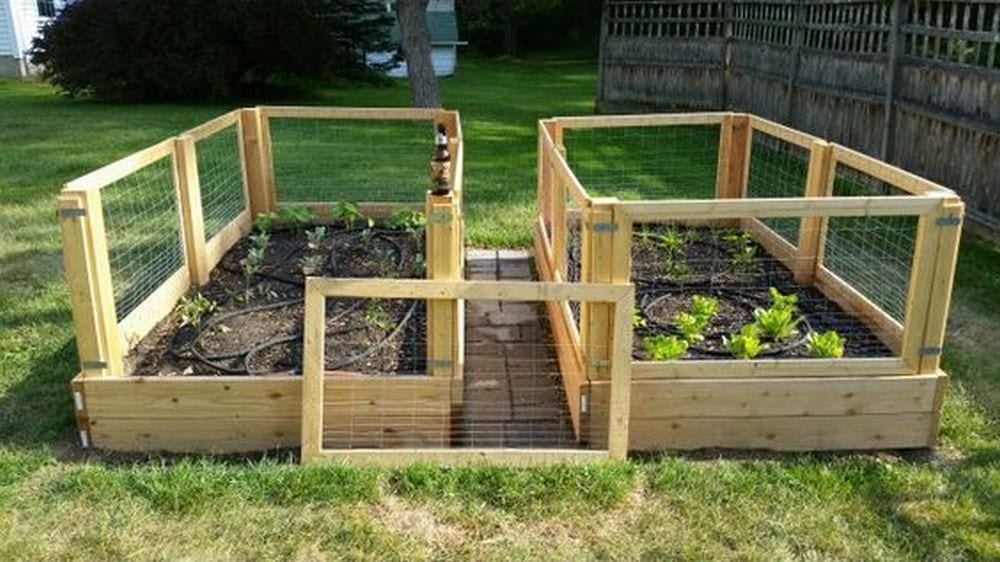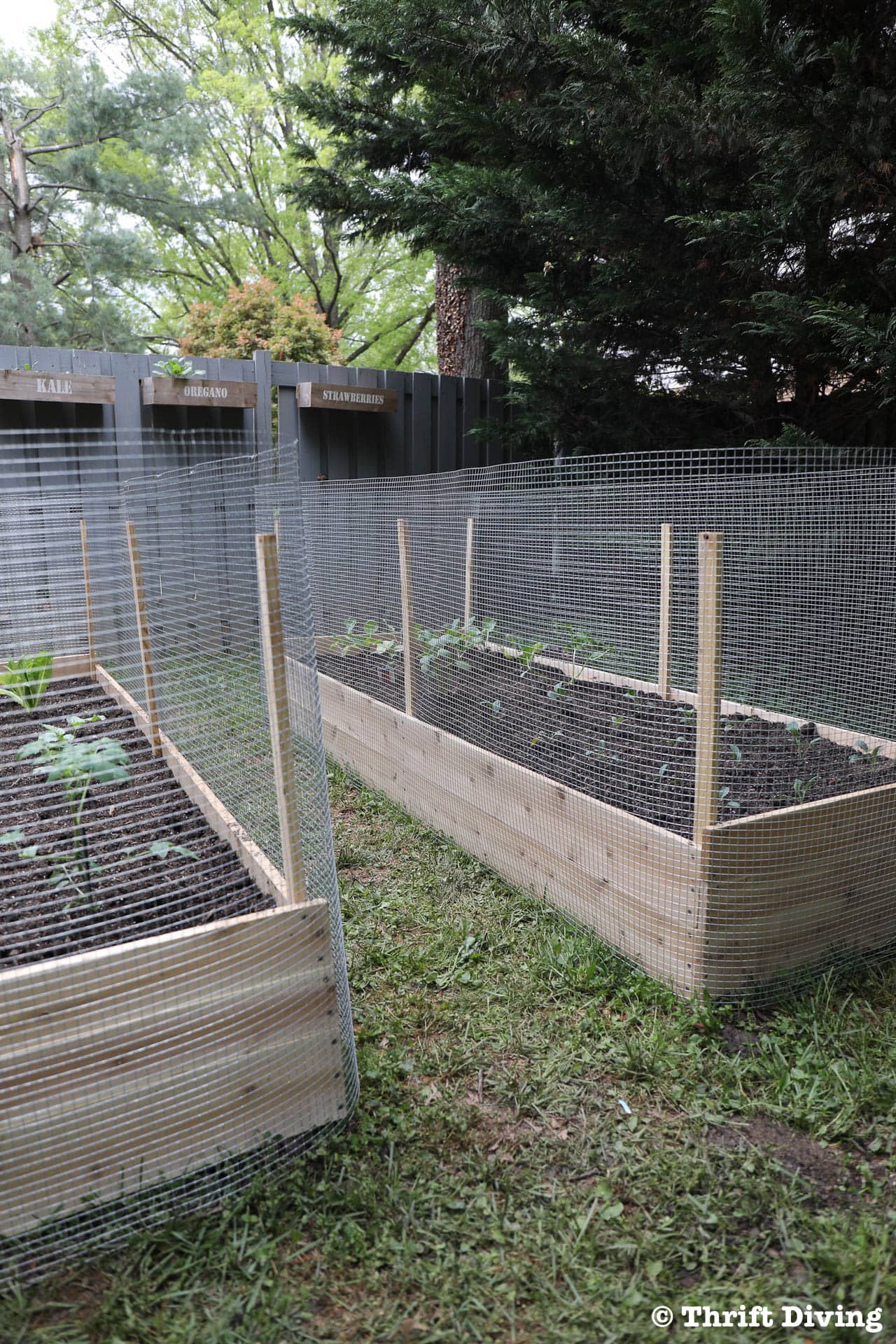To fence a raised garden bed, first, measure the bed’s dimensions, and purchase the appropriate amount of fencing material. Then, install the fence posts around the perimeter of the bed, ensuring they are securely anchored in the ground.
Finally, attach the fencing material to the posts, evenly securing it and ensuring there are no gaps that small animals could fit through. Raised garden beds are an excellent way to cultivate plants, providing better soil drainage, fewer weeds, and easier access for gardening tasks.
However, it is essential to protect these beds from potential threats like pests or animals that could damage your plants. That’s where fencing comes in. By fencing a raised garden bed, you can safeguard your plants and ensure their growth without interference. We will explore the simple steps you can follow to fence a raised garden bed effectively. With these instructions, you will be able to protect your plants and enjoy a bountiful harvest. So let’s get started!

Credit: gardens.theownerbuildernetwork.co
Why You Need To Fence A Raised Garden Bed
Fencing a raised garden bed is crucial to protect plants from wildlife. It also prevents pets from damaging or disturbing your plants. Additionally, it adds a decorative touch to your garden, enhancing its overall appearance. By using a fence, you create a barrier that deters animals from entering and causing harm to your plants, ensuring their safety and growth.
The fence will keep out rabbits, squirrels, and other intruders who may feed on your crops or trample them. Moreover, it provides a visual appeal, adding a charming element to your garden design. With a variety of fencing options available, you can choose a style that complements your garden aesthetics while fulfilling its primary purpose of safeguarding your plants from unwanted disturbances.
So, consider fencing your raised garden bed today to enjoy a flourishing and protected garden space.
How to Fence a Raised Garden Bed: Step by Step Guide
Planning And Preparation
To successfully fence your raised garden bed, start by measuring its dimensions accurately. This step ensures that you choose the appropriate amount of fence material. Next, consider the type of fence material that best suits your needs. Whether it’s wood, pvc, or metal, make an informed decision.
Once you’ve made your selection, gather the necessary tools and materials before starting the project. Being prepared ensures a smooth and efficient fencing process. Remember to follow these guidelines for effective planning and preparation of your raised garden bed fence.
Building The Fence
To fence a raised garden bed, start by marking the perimeter of the garden bed and identifying the desired area. Dig holes, ensuring that they are deep enough to accommodate the fence posts securely. Install the fence posts firmly, using cement or concrete for stability.
Attach the fence panels to the posts, making sure they are level and secure. This will provide support and protection for your garden bed. Additionally, consider adding a gate for easy access to the garden bed, allowing you to tend to your plants conveniently.
With these steps, you can build a fence around your raised garden bed, safeguarding it from unwanted intruders and enhancing its overall appearance and functionality.
Enhancements And Maintenance
Enhancements and maintenance are essential when it comes to fencing a raised garden bed. Applying a protective finish to the fence helps to prolong its lifespan. To add aesthetic appeal, consider installing trellises or planting climbing plants. Regularly inspecting and repairing any damages to the fence ensures its durability.

Avoid repetitive terms to maintain the reader’s interest. Be sure to choose unique expressions as the blog post should be seo friendly, human-like, and plagiarism free. By following these guidelines, you can create a compelling and informative article that is easy to understand and engages the reader without the need for a conclusion paragraph.
Frequently Asked Questions Of How To Fence A Raised Garden Bed
How Do You Create A Raised Garden Bed?
To create a raised garden bed, start by selecting a location with good sunlight and prepare the ground by removing any grass or weeds. Use untreated lumber or garden blocks to build a rectangular frame, making sure it is level.
Fill the bed with a mix of topsoil, compost, and organic matter. Finally, sow your desired plants or seeds in the bed.
Why Should You Fence A Raised Garden Bed?
Fencing a raised garden bed helps protect your plants from pests and wildlife, preventing them from being eaten or trampled. It also serves as a barrier to keep out weeds and unwanted plants from infiltrating your garden. A fence can also add aesthetic value and define the boundaries of your garden space.
What Materials Do You Need To Fence A Raised Garden Bed?
To fence a raised garden bed, you will need materials such as wire mesh or chicken wire, wooden stakes or posts, zip ties or wire, and a staple gun. These materials will ensure the fence is sturdy, secure, and durable.
Remember to choose materials that are safe for your plants and environment.
Conclusion
Fencing a raised garden bed is a crucial step in ensuring the success of your gardening endeavors. By following the steps outlined in this blog post, you can protect your plants from pests, animals, and other potential threats, while also adding an aesthetic touch to your garden.
From choosing the right materials to securing the fence firmly in place, every step plays a significant role in achieving a functional and visually appealing garden bed. Additionally, incorporating creative and innovative fencing ideas can further elevate the overall look of your garden, making it a standout feature in your outdoor space.
Remember, proper maintenance and regular checks are essential to ensure the fence remains structurally sound and functional. With these tips, you can confidently fence your raised garden bed and enjoy a bountiful and beautiful garden for years to come.

